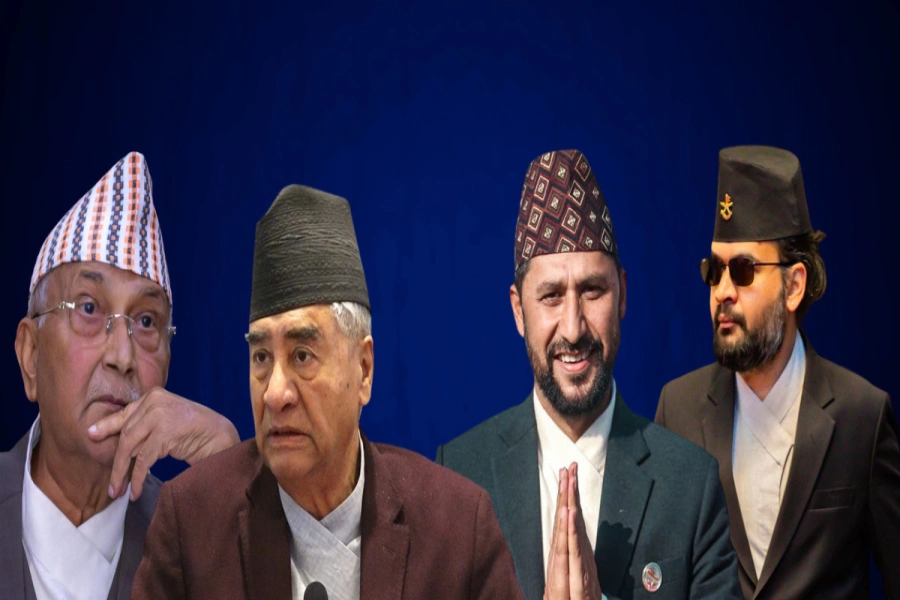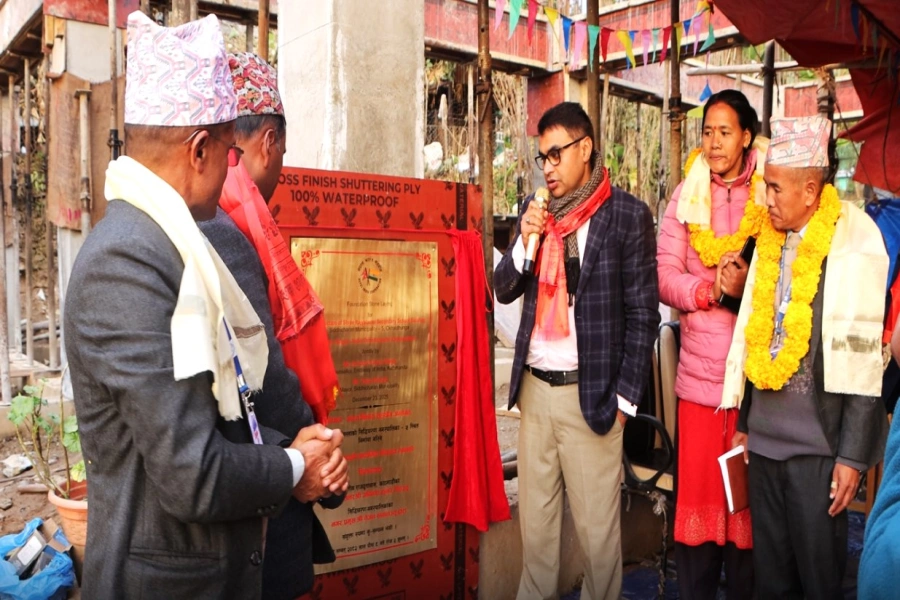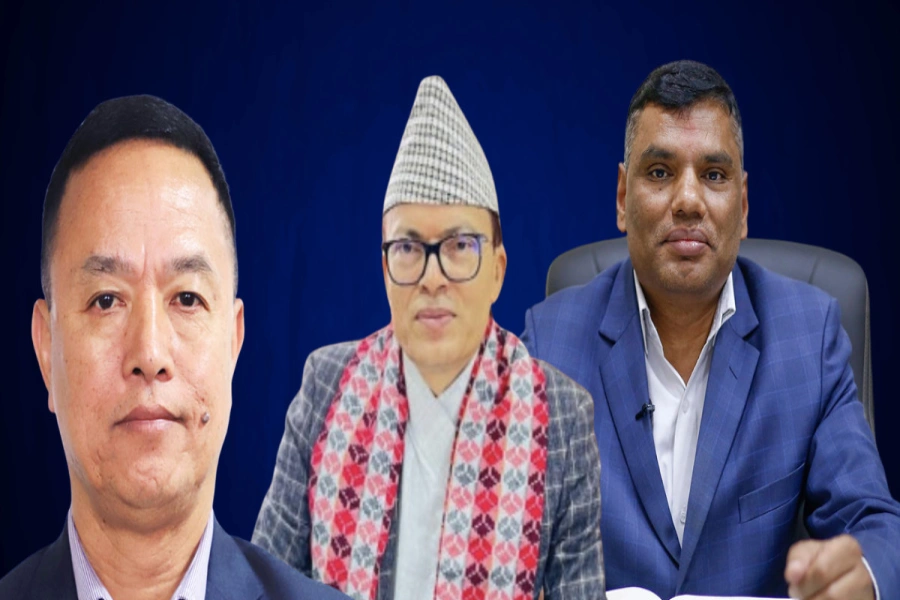It is fair to say that just because Brahmins had access to writing and reading, because of the thousands of years old unfair hierarchy, they continuously held an important place in society by birth and did not have to work hard for much of what they got
When elitism or Brahminism is mixed with populism, it really becomes toxic. This is how we ended up with daydreaming, hyperbolic and self-grandeur leadership.
A couple of days back, we were watching a documentary on the Buddha. The narrator was describing how the Buddha challenged the hierarchy based on caste. Since my daughter has no knowledge around the caste system, she was stunned to find that the religion/culture that she was born into divides people up right at birth.
“Is the work divided according to the caste system in Nepal nowadays as well, Daddy?” “Not exactly darling, times have changed. Kshatriyas who are considered the fighters share their responsibilities with other castes nowadays. The Vaishyas were the traders, farmers, and merchants as per the hierarchy but nowadays anyone from any caste can be a farmer or a merchant. Shudras were considered to be manual workers but even “Brahmins” leave in droves for manual jobs in different countries. It’s pretty much mixed in terms of profession but Brahmins still have the hold on their primary tasks defined by the hierarchy,” I concluded.
I also did not want to sugarcoat how people are chained into their respective caste, socially, structurally, and psychologically and how they largely stay within the boundaries defined by the hierarchy despite some recorded progress. “That’s not fair,” she declared and followed it with another question: “What do Brahmins actually do, Daddy?” “Priestly stuff.” I figured she was too small to discuss all that I had in mind but wanted her to understand that it is work in progress and has huge obstacles. “Like all the other religions and cultures, the one you are born into has practices that are discriminatory and to some extent inhumane. And the caste system is one of the worst practices of Hinduism and ought to be changed,” I tried to convince her that I was on her side.
She is introduced to slavery in America in her social studies class and loves Martin Luther King, a civil rights icon, who fought against segregation in America. So she knew what I meant by “change.” It helped to put the conversation to rest.
Despite that the question “what do Brahmins actually do?” haunted me for long.
They narrate
What do Brahmins actually do? After much thought, I have come to the conclusion that Brahmins do nothing but narrate. They have taken over the narration industry. It probably started with Vedas, continued with Ramayana, Mahabharata, and other narrations after, for hundreds of years, if not more. I will give you a real-world example. Let’s start with my grandfather. He interpreted the Sanskrit slokas for everyday farmers, merchants, and warriors. He named their children, charted the journey of their lives, “monitored planets, and made sure they remained aligned” to their benefit.
Brahmins in Dailekh refuse to observe Rakshya Bandhan

As a Pundit, he had a lot of influence on his clients’ lives. He basically was the powerhouse and narrated events not just to serve the needs of his clients but to his own benefit. I don’t know if he expanded the pie, but I am sure in every transaction he had his piece secured. Brahmins were so powerful in his time that Ranas, who were notorious for killing even their own clan, spared Brahmins. They actually gave them lands, cows, and coins. Keeping Brahmins happy and on their side was widely believed to be not only the religious thing but the right thing to do.
After that came the teachers’ generation— most of the Brahmins of my father’s generation in my family were/are teachers. They had access to power, because they taught, interpreted, and defined everything to their advantage. The entire village depended on the teachers for suggestions. It’s safe to assume that they had tremendous power over the villagers. When I grew up I practiced journalism. I wrote and covered news, interpreted and analyzed issues as I wanted, from my vantage point.
All three generations, despite taking different jobs, had one thing in common. We always had ears to the power center because we were the narrators. We did nothing but took control of the narrative. All the powers throughout the history of Nepal, starting with Dravya Shah depended on Brahmins for suggestions. It was important for the Ranas and the Shahs to work with the Brahmins because Brahmins probably were the only caste who had access to the education/ knowledge system then. And they could help to dispense a positive image of their regime. So, it is fair to say that just because Brahmins had access to writing and reading, because of the thousands of years old unfair hierarchy, they continuously held an important place in society by birth and did not have to work hard for much of what they got.
I would even argue that Brahmins were given things sometimes without asking. Because pleasing Brahmins/ priests/Pandits religiously meant “access to heaven after death” and still is believed to be true in many parts of Nepal and India. Those Brahmins who were uneducated, and poor, still got something that other so-called lower castes didn’t. That was their unquestionable acceptance in a society that embraced them fully because they were Brahmins.
In other words, the entire system was skewed towards the benefits of Brahmins and Chhetriyas (warriors) because they were the face of power and always remained at the center. Brahmins and Chhetriyas were entitled and controlled the government no matter which system came to power. Just look at the list of prime ministers, even after the establishment of democracy, and see how many of them are Brahmins. In short, Brahminism has always been accepted as a formidable voice in both Nepal and India. The Brahmin supremacy of India and Nepal is the white supremacy of South Asia, if not more.
If you are Brahmin, and this makes you uncomfortable, but you still want to continue reading, I have done my job. Because you have to get out of the comfort nest of structural abuse Hindu society has in place to understand what you have. I probably would not have understood it hadn’t I taken the journey away from Hindu defined power structure into a power structure that barely had any space for me.
Boston Brahmins
So when this “Brahmin” from Nepal landed in Boston 14 years ago, I thought I was in an entirely new system. But I soon realized that it was not only a hierarchical society but there were Brahmins in Boston long before the Hindu Brahmins came to America.
Now, that jolted my curiosity. The entire New England was fascinated by Boston Brahmins. Yes, they called themselves Boston Brahmins. The term was coined by a writer Oliver Holmes to describe Boston's aristocratic class and it was widely used in Boston and surrounding to claim their high status. Of course, they got the idea from India, like the West in those days was widely influenced by the East. Anglo-American elites associated with the earliest English colonists were considered to be the Boston Brahmins. They were well educated and had an immense grip on power. Samuel Adams, one of the founding fathers, John Adams, the second American President, and many other elites who were connected to institutions like Harvard and Oxford were the Boston Brahmins. T.S Elliot was one of the Boston Brahmins. You must have heard of the last names—Warren, Weld, and Emerson—all Boston Brahmins. Quincy and Lowell are the last names of Boston Brahmins which are now the famous cities in Massachusetts. Those of you who have been accustomed to Bahundanda will understand the equivalent of power these names carry even today. There are more than five dozen last names that are listed under Boston Brahmins. The current little known challenger to President Trump in a primary, Bill Weld, is a Boston Brahmin. You have to understand the historical image he exerts to understand his desire to challenge Trump.
So why am I bringing this up? Because like the Hindu Brahmins, Boston Brahmins explored and exploited power and controlled the narrative of American history. Like the Hindu Brahmins, the Boston Brahmins thought they were supreme. They were fascinated by the Hindu Brahmins because they, like the Hindu Brahmins, wanted to create an aristocratic class by birth in order to control power. They thought they were intellectuals and priestly and largely married in-group.
Later on, people with money and power, even non-Anglo-Saxons, were accepted into this group. Well, exceptions were made to create and expand power. John Kerry, the former Secretary of State, is cited as an example. Slowly, immigrants from Asia and Africa changed the face of America. That demographic change pushed the European group thinking and they banded together to create a bigger group and started accepting college-educated whites expanding the boundary of elites defined by Boston Brahmins. Now, the power is still in the hands of the closed social group, largely the upshot of the same Boston Brahmins.
Yes, present-day America, even though you have not seen it categorized, works like the four Varnas of Hinduism, an extension of Boston Brahmins’ dream. The term Boston Brahmins was limited to its Anglo-Saxon roots but now is extended to incorporate all the educated Whites, known as Caucasians. The college-educated Whites now exert power in state and federal affairs the same way Boston Brahmins did then.
By that definition, the uneducated and the high school educated blue color jobholders, rural American whites, who largely have fought the American wars, and are easily manipulated simply by throwing a card of nationalism, are equivalent to Chhetriyas. Trump rallied them to win the presidency and is relying on the same demographics for the upcoming election.
Like the Chhetriyas of Nepal, most of them think they are the face of the nation, and some even question the citizenship of the US-born non-whites. You must be wondering where the South Asians fit in. Like the Vaishyas in Hinduism, most of the Asians are merchants and businessmen. No matter who they are in Hinduism, they all are lumped into colored people first and Asians as a subcategory. Since they are hardly accepted in politics and government, they are largely based on where they came from.
This census year, we picked our ethnicity as Nepali under a category other Asian. Since the white Brahmins largely control the government, all the South Asians, including those accepting the hierarchy of Hinduism—Brahmins and Chhetriyas, Vaishyas, and Shudras—barely produce any power in white America to this day. That is why they are in service-related jobs and largely run/own convenience stores, gas stations, and motels.
Even the second generation Asians are aware of their limited role in America and stick to the suggestions of their parents and seek jobs in fields like medicine and technology where they would be easily accepted. Thanks to the Indians and Pakistanis, Nepalis have been accepted in technological and medical sectors because of close resemblance with them. This field is pretty much non-existent to Hispanics and African Americans who mostly spend their lives in lower rungs of service-related jobs— equivalent to the Shudras if measured by the caste system of Hinduism.
If you are wondering who fit the category of untouchables, you don’t have to look any further than undocumented people who basically are picked up and thrown into prisons and out of the country because the power structure does not have a record of their existence.
There are few Asians, blacks, and Hispanic faces who have made unexpected twists into politics largely because of the recent nationalist movement in America. And there are those who have been dying to assimilate culturally, religiously, and socially with the white Brahmins. They largely relinquish their roots and make 180-degree changes in their religion/ culture and adopt the dominant culture to be close to power. And since these people fit perfectly on the puzzle of faces the elite love to have they get manipulated to work against the change. On top, their presence in power helps to dismiss the change seekers because their faces are used to show that the system is merit-based and is non-discriminatory. Otherwise, how do you respond to the people who look at the changing faces of America and ask questions around systematic discrimination to power? After all, half of the electorate is “colored”. To sum up, the darker the shade of your skin, the farther away you could be from power.
Brahminism and populism
Well, if you are worried about the mutation of Brahminism in the West that took place centuries back, you have not seen the worst. Braminsim and populism are gripping the world. India is a perfect example of the combo—the result is Hindu nationalism. Muslims are the out-group and will be the target of everything that the Hindu nationalist government wants them to be blamed for.
In the United States, it is Trumpism. Currently, Trumpism encompasses most of the rural gunslinging white Americans who are Christians—almost an oxymoron. Boston Brahmins are seized to be in use but it has mutated essentially into white supremacy. Before, it was believed to be knowledge/class-based status. Now, it is just defined by whiteness.
Whatever you want to call it, elitism, Brahminism, white Brahminism, when it is mixed with populism, it really becomes toxic. This is how we ended up with daydreaming, hyperbole, and self-grandeur leadership.
Just last week KP Oli was railing against the media for putting him and his government on spot. “How dare these journalists do find our work malfunction?” was his gripe. As a Brahmin, he was never taught to accept responsibility for anything. You would think a guy who has gone through the near death experience, and is living his life on a donated kidney, would be a little humble, don’t you? No, he doesn’t have to. Like most Brahmins, society made him entitled. Like all the populists, he is right, all the time. He can’t help, Brahminism is in his blood. Populism is in his head. He was an economist yesterday, virologist, today, and would be a physicist tomorrow. He will blame the media for quoting him wrong. Because that’s what populists do. They stay in power no matter how incompetent they are. They know that they do not have to apologize.
Actually, Brahmins have not learnt to apologize because they are always right. Populism makes
it even worse.
White Brahminism has similar traits. We are struggling with Donald Trump and his unchecked populism every day. Deny, deflect, and intimidate are the tactics used by Trump. He is never wrong. He is an expert on everything. And if you have not noticed, it is always someone else’s fault: China, Mexicans, Islam. Close to 50,000 Americans have already lost their lives because of COVID-19. He clearly screwed up and did not prepare to combat the virus. We still don’t have enough test kits. But will he apologize? Trumpism is a populist movement. Trumpism does not apologize. Even when millions of Americans are at risk of contracting the virus because of the mixed messaging, ignited by Trump’s impatience to open America, he is not going to apologize. That’s what populism is all about. It’s about being right even when all the facts are against you.
Populist Brahminism is a dangerous mutation. We would definitely get the cure for COVID-19 sooner or later. But I really doubt that the cure for populist Brahminism is ever going to be discovered.
































